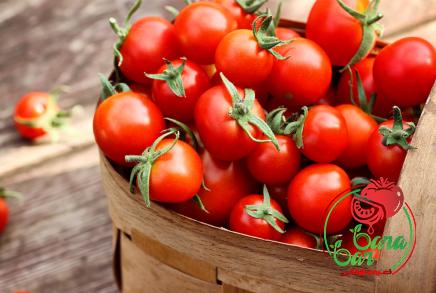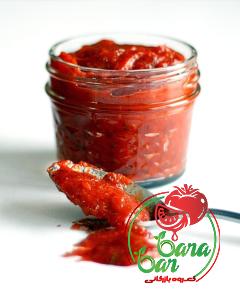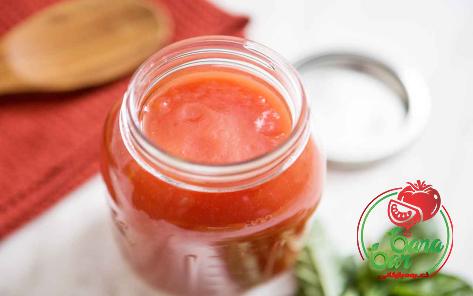In the vast and diverse tapestry of Chinese cuisine, one ingredient stands out for its versatility, rich flavor, and vibrant color – tomato paste. Used in a wide array of dishes, tomato paste adds depth, tanginess, and a touch of sweetness to culinary creations that span from mouthwatering stews to savory sauces and beyond. Join us on a savory journey through the world of tomato paste in Chinese cuisine, as we explore its history, production methods, culinary applications, and tips for incorporating this beloved ingredient into your kitchen repertoire. **The History and Evolution of Tomato Paste in Chinese Cuisine** While tomatoes are not native to China, their introduction to the country dates back to the Ming Dynasty. Initially, tomatoes were considered decorative plants due to their bright red color, and it wasn’t until the 19th century that they were recognized for their culinary potential. Tomato paste, a concentrated form of tomatoes, gained popularity in Chinese cuisine over the years, with its use spreading across regions and culinary traditions.

.
 **The Production Process: From Tomatoes to Tomato Paste** The production of tomato paste involves a meticulous process that begins with ripe tomatoes harvested at the peak of freshness. These tomatoes are washed, sorted, and crushed to extract their pulp and juice. The resulting mixture is simmered to reduce moisture and intensify flavors, creating a thick, concentrated paste. This paste is then strained to remove any remaining solids, resulting in the smooth and velvety texture that is characteristic of high-quality tomato paste. **Varieties of Tomato Paste in Chinese Cuisine** In Chinese cuisine, tomato paste comes in various forms, each offering its unique flavor profile and culinary applications. From the rich and concentrated double-concentrated tomato paste to the more liquid-like tomato sauce, Chinese chefs have a wide range of options to choose from based on their specific culinary needs. Additionally, flavored tomato pastes, infused with spices and herbs, add an extra layer of complexity to dishes, enhancing their depth and complexity. **Culinary Applications of Tomato Paste in Chinese Cuisine** Tomato paste is a staple ingredient in many Chinese dishes, adding a burst of umami-rich flavor and vibrant color to a wide variety of recipes. From the iconic sweet and sour pork to the hearty tomato beef stew, tomato paste plays a central role in some of China’s most beloved culinary creations. Its versatility extends beyond traditional dishes, with chefs incorporating it into marinades, sauces, soups, and stir-fries to elevate the overall flavor profile of the dish.
**The Production Process: From Tomatoes to Tomato Paste** The production of tomato paste involves a meticulous process that begins with ripe tomatoes harvested at the peak of freshness. These tomatoes are washed, sorted, and crushed to extract their pulp and juice. The resulting mixture is simmered to reduce moisture and intensify flavors, creating a thick, concentrated paste. This paste is then strained to remove any remaining solids, resulting in the smooth and velvety texture that is characteristic of high-quality tomato paste. **Varieties of Tomato Paste in Chinese Cuisine** In Chinese cuisine, tomato paste comes in various forms, each offering its unique flavor profile and culinary applications. From the rich and concentrated double-concentrated tomato paste to the more liquid-like tomato sauce, Chinese chefs have a wide range of options to choose from based on their specific culinary needs. Additionally, flavored tomato pastes, infused with spices and herbs, add an extra layer of complexity to dishes, enhancing their depth and complexity. **Culinary Applications of Tomato Paste in Chinese Cuisine** Tomato paste is a staple ingredient in many Chinese dishes, adding a burst of umami-rich flavor and vibrant color to a wide variety of recipes. From the iconic sweet and sour pork to the hearty tomato beef stew, tomato paste plays a central role in some of China’s most beloved culinary creations. Its versatility extends beyond traditional dishes, with chefs incorporating it into marinades, sauces, soups, and stir-fries to elevate the overall flavor profile of the dish.
..
 **Nutritional Benefits of Tomato Paste** Apart from its culinary prowess, tomato paste also offers a range of health benefits. Rich in antioxidants such as lycopene, vitamin C, and potassium, tomato paste supports overall health and well-being. Lycopene, in particular, has been linked to a reduced risk of certain cancers and heart disease, making tomato paste a wholesome addition to any diet. **Tips for Cooking with Tomato Paste** To unleash the full potential of tomato paste in your culinary creations, here are some essential tips to keep in mind: 1. Sautéing: Before adding tomato paste to your dish, consider sautéing it in oil or butter to enhance its flavor and aroma. 2. Diluting: If a recipe calls for tomato paste but you prefer a milder flavor, dilute it with water or broth to achieve the desired balance. 3. Storage: Store leftover tomato paste in an airtight container in the refrigerator, or freeze it in portions for future use to prevent spoilage. 4. Experimentation: Don’t be afraid to experiment with different varieties of tomato paste and flavor profiles to discover new and exciting culinary combinations. **In conclusion, tomato paste holds a special place in the heart of Chinese cuisine, adding depth, richness, and a touch of sweetness to a myriad of dishes. With its rich history, diverse culinary applications, and nutritional benefits, tomato paste is a must-have ingredient in any kitchen. Whether you’re a seasoned chef or a culinary enthusiast looking to explore new flavors, tomato paste in Chinese cuisine offers a world of possibilities waiting to be discovered.** **Exploring Regional Variations of Tomato Paste in Chinese Cuisine** In the vast landscape of Chinese cuisine, each region brings its unique twist to the use of tomato paste in cooking. Let’s delve into some regional variations that showcase the diversity and creativity of Chinese culinary traditions: 1. **Sichuan Cuisine**: Known for its bold and spicy flavors, Sichuan cuisine incorporates tomato paste in dishes such as Mapo Tofu, where the tanginess of the paste balances the heat of the chili peppers, creating a harmonious flavor profile that is both comforting and satisfying. 2. **Cantonese Cuisine**: In Cantonese cuisine, tomato paste is often used in dishes like sweet and sour pork, where the sweetness of the paste complements the tanginess of the vinegar, creating a delightful contrast of flavors and textures that is a hallmark of Cantonese cooking.
**Nutritional Benefits of Tomato Paste** Apart from its culinary prowess, tomato paste also offers a range of health benefits. Rich in antioxidants such as lycopene, vitamin C, and potassium, tomato paste supports overall health and well-being. Lycopene, in particular, has been linked to a reduced risk of certain cancers and heart disease, making tomato paste a wholesome addition to any diet. **Tips for Cooking with Tomato Paste** To unleash the full potential of tomato paste in your culinary creations, here are some essential tips to keep in mind: 1. Sautéing: Before adding tomato paste to your dish, consider sautéing it in oil or butter to enhance its flavor and aroma. 2. Diluting: If a recipe calls for tomato paste but you prefer a milder flavor, dilute it with water or broth to achieve the desired balance. 3. Storage: Store leftover tomato paste in an airtight container in the refrigerator, or freeze it in portions for future use to prevent spoilage. 4. Experimentation: Don’t be afraid to experiment with different varieties of tomato paste and flavor profiles to discover new and exciting culinary combinations. **In conclusion, tomato paste holds a special place in the heart of Chinese cuisine, adding depth, richness, and a touch of sweetness to a myriad of dishes. With its rich history, diverse culinary applications, and nutritional benefits, tomato paste is a must-have ingredient in any kitchen. Whether you’re a seasoned chef or a culinary enthusiast looking to explore new flavors, tomato paste in Chinese cuisine offers a world of possibilities waiting to be discovered.** **Exploring Regional Variations of Tomato Paste in Chinese Cuisine** In the vast landscape of Chinese cuisine, each region brings its unique twist to the use of tomato paste in cooking. Let’s delve into some regional variations that showcase the diversity and creativity of Chinese culinary traditions: 1. **Sichuan Cuisine**: Known for its bold and spicy flavors, Sichuan cuisine incorporates tomato paste in dishes such as Mapo Tofu, where the tanginess of the paste balances the heat of the chili peppers, creating a harmonious flavor profile that is both comforting and satisfying. 2. **Cantonese Cuisine**: In Cantonese cuisine, tomato paste is often used in dishes like sweet and sour pork, where the sweetness of the paste complements the tanginess of the vinegar, creating a delightful contrast of flavors and textures that is a hallmark of Cantonese cooking.
…
 3. **Shanghai Cuisine**: Shanghai cuisine showcases the versatility of tomato paste in dishes like Hong Shao Rou, a braised pork belly dish that features a rich and savory sauce made with tomato paste, soy sauce, and aromatic spices, creating a comforting and indulgent meal that is beloved by locals and visitors alike. 4. **Northern Chinese Cuisine**: In northern Chinese cuisine, tomato paste finds its way into hearty stews and braised dishes, adding depth and complexity to meat-based recipes like tomato beef stew, where the tangy sweetness of the paste enhances the robust flavors of the meat and spices. **Tomato Paste in Traditional Chinese Medicine** In addition to its culinary uses, tomato paste has also found a place in traditional Chinese medicine for its health benefits. In TCM, tomatoes are believed to have cooling properties that help balance the body’s internal heat, making them beneficial for individuals with heat-related ailments such as inflammation and digestive issues. Incorporating tomato paste into TCM remedies and herbal concoctions allows for the harnessing of its nutritional and medicinal properties in a holistic approach to health and wellness. **The Future of Tomato Paste in Chinese Cuisine** As Chinese cuisine continues to evolve and adapt to modern tastes and trends, the role of tomato paste in culinary creations is expected to expand and diversify. With a growing emphasis on health-conscious eating and global culinary influences, chefs and home cooks are exploring new ways to incorporate tomato paste into a wide range of dishes, from traditional favorites to innovative fusion creations. Furthermore, as sustainability and environmental concerns become increasingly important in the food industry, the sourcing and production of tomato paste are also evolving. Farmers and producers are adopting sustainable farming practices, reducing waste, and exploring organic and locally sourced ingredients to create high-quality tomato paste that is not only delicious but also environmentally friendly. In conclusion, tomato paste in Chinese cuisine is a cornerstone ingredient that enriches dishes with its vibrant color, rich flavor, and nutritious benefits. From traditional recipes passed down through generations to modern interpretations that push the boundaries of culinary creativity, tomato paste continues to captivate taste buds and inspire culinary innovation. Whether enjoyed in a classic comfort dish or incorporated into a bold and inventive creation, tomato paste is a beloved ingredient that will undoubtedly continue to leave its mark on the ever-evolving landscape of Chinese cuisine.
3. **Shanghai Cuisine**: Shanghai cuisine showcases the versatility of tomato paste in dishes like Hong Shao Rou, a braised pork belly dish that features a rich and savory sauce made with tomato paste, soy sauce, and aromatic spices, creating a comforting and indulgent meal that is beloved by locals and visitors alike. 4. **Northern Chinese Cuisine**: In northern Chinese cuisine, tomato paste finds its way into hearty stews and braised dishes, adding depth and complexity to meat-based recipes like tomato beef stew, where the tangy sweetness of the paste enhances the robust flavors of the meat and spices. **Tomato Paste in Traditional Chinese Medicine** In addition to its culinary uses, tomato paste has also found a place in traditional Chinese medicine for its health benefits. In TCM, tomatoes are believed to have cooling properties that help balance the body’s internal heat, making them beneficial for individuals with heat-related ailments such as inflammation and digestive issues. Incorporating tomato paste into TCM remedies and herbal concoctions allows for the harnessing of its nutritional and medicinal properties in a holistic approach to health and wellness. **The Future of Tomato Paste in Chinese Cuisine** As Chinese cuisine continues to evolve and adapt to modern tastes and trends, the role of tomato paste in culinary creations is expected to expand and diversify. With a growing emphasis on health-conscious eating and global culinary influences, chefs and home cooks are exploring new ways to incorporate tomato paste into a wide range of dishes, from traditional favorites to innovative fusion creations. Furthermore, as sustainability and environmental concerns become increasingly important in the food industry, the sourcing and production of tomato paste are also evolving. Farmers and producers are adopting sustainable farming practices, reducing waste, and exploring organic and locally sourced ingredients to create high-quality tomato paste that is not only delicious but also environmentally friendly. In conclusion, tomato paste in Chinese cuisine is a cornerstone ingredient that enriches dishes with its vibrant color, rich flavor, and nutritious benefits. From traditional recipes passed down through generations to modern interpretations that push the boundaries of culinary creativity, tomato paste continues to captivate taste buds and inspire culinary innovation. Whether enjoyed in a classic comfort dish or incorporated into a bold and inventive creation, tomato paste is a beloved ingredient that will undoubtedly continue to leave its mark on the ever-evolving landscape of Chinese cuisine.










Your comment submitted.